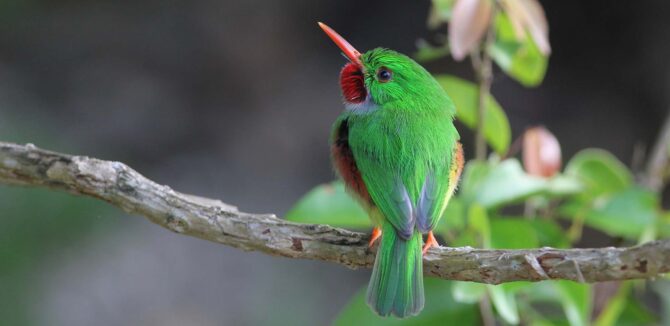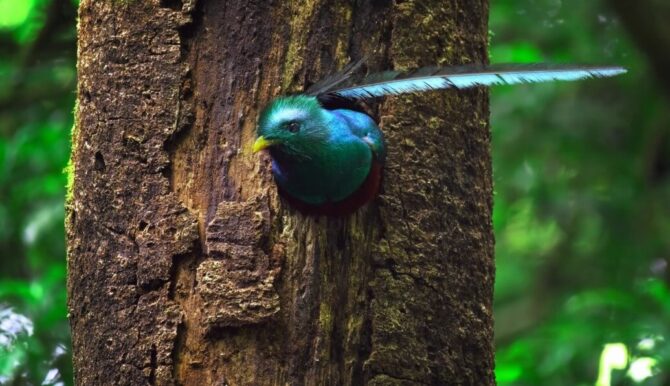Do you know dinosaurs still exist today? Well, maybe not the way you imagine. These aren’t the dinosaurs of Jurassic Park.
You’d probably walk by without a glance if you saw modern-day dinosaurs. We even have a new name for them. We call them birds.
There’s an undeniable link between birds and dinosaurs, as the former is the evolutionary offspring of the latter.
What’s more, some birds retain similarities with the prehistoric creatures of old.
Examples of birds that look like dinosaurs include the great blue heron, sandhill crane, cinereous vulture, and toucan, to mention a few.
These birds that look similar to their dinosaur ancestors are our main focus. Read on for more information.
Are Birds Dinosaurs?
The answer to this may not fit with what you know about dinosaurs, but birds can technically be called a dinosaur.
The scary image of dinosaurs as ferocious reptiles may be accurate, but not always so. According to recent findings, dinosaurs are more related to birds than crocodiles.1
Birds belong to a theropod group of dinosaurs, in which you’d also find the Tyrannosaurus Rex.
This group is also called “feathered dinosaurs,” and all birds belong to this category.
In modern classification, birds are considered reptiles alongside lizards and crocodiles.2 However, the traditional Linnean classification places birds in a different category.3
Species of Birds that Look Like Dinosaurs
1. Great Blue Heron
(Ardea Herodias)
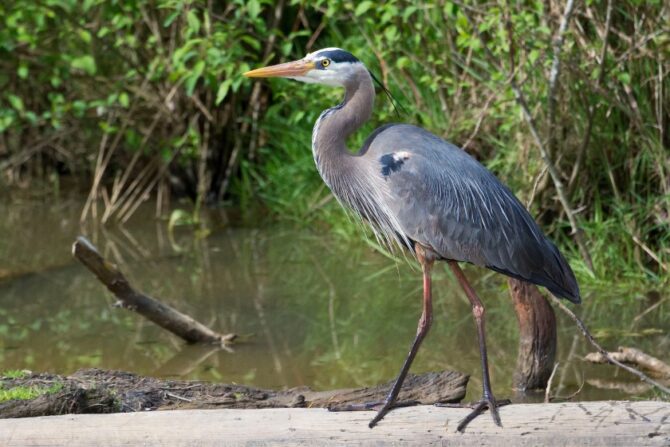
The great blue heron is a descendant of velociraptors, and it currently belongs to the Ardea family. A physical feature it picked from its ancestor is the three-toed leg.
The great blue heron occurs in most areas of North and Central America, and it has a close relative known as the great white heron.
No one is quite sure whether to classify the latter as a color morph, a subspecies, or a different species of its own.
This is the biggest heron that’s a native of North America, and in general, it is the third biggest. It feeds primarily on small fish.
2. Shoebill
(Balaeniceps Rex)
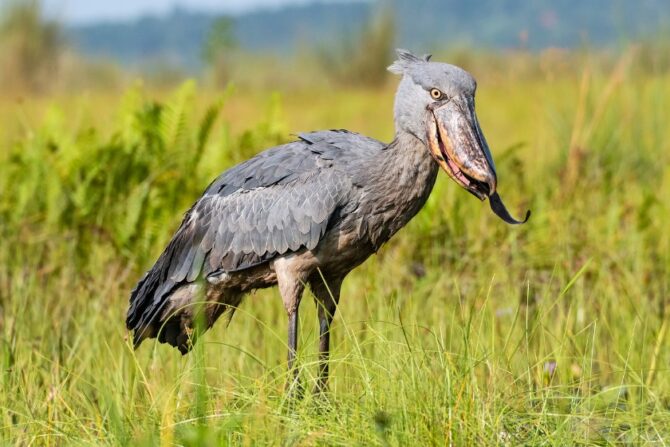
The shoebill is also known as the shoe-billed stork, the whalebill, and the whale-headed stork.
Its scientific name alone reflects the dinosaur line and has a prehistoric look. It got its name from the bill shaped like a shoe.
The shoebill is known to be quiet and could remain still for a long time. It likely got this trait from its ancestors too.
Shoebills can be found in East Africa, living in places like South Sudan and Zambia. Other countries the shoebill stays are Congo, Uganda, Tanzania, and Rwanda.
These birds are sensitive to humans and may shy away. It feeds largely on fish.
Related: Weird Birds: The Strangest & Most Bizarre-Looking Species In The World
3. Cinereous Vulture
(Aegypius Monachus)
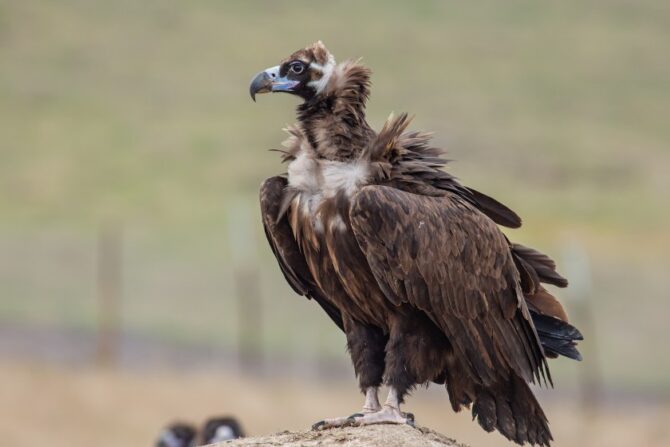
The cinereous vulture is a descendant of raptors, and as the largest bird of prey, it might have gotten its size from its ancestor.
It is also called the black vulture, monk vulture, or Eurasian black vulture. It is found around Europe and Asia, which explains the last name.
Cinereous vultures live in countries like Spain, Portugal, France, Korea, and Afghanistan.
Its preferred habitats include mountainous and hilly areas, but it can be found in other places like steppes, grasslands, and woodlands.
Cinereous vultures are scavengers feeding on dead carrion like any other vulture.
This bird is solitary, and you’d either find it alone or in pairs.
4. Cassowary
(Casuarius)
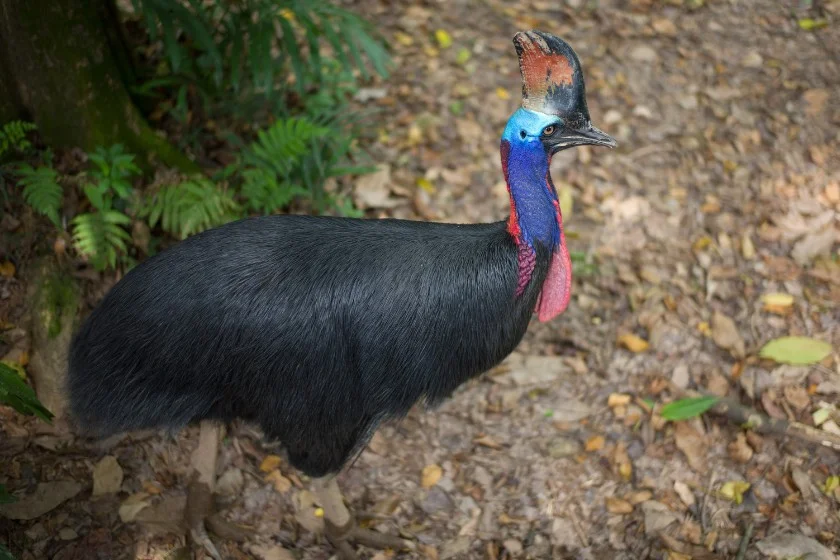
The cassowary is another ratite bird related to the corythosaurus. The latter is similar to the cassowary, having the same structure.
There are three cassowary species alive today: the southern cassowary, northern cassowary, and dwarf cassowary. The southern cassowary is the most popular of all three.
This bird occurs in Australia, New Guinea, and the Ani islands. Its preferred habitat in these regions is the tropical forest, but you can also find it in some national parks.
All cassowary species face population decline due to habitat loss.
5. Pelican
(Pelecanus)
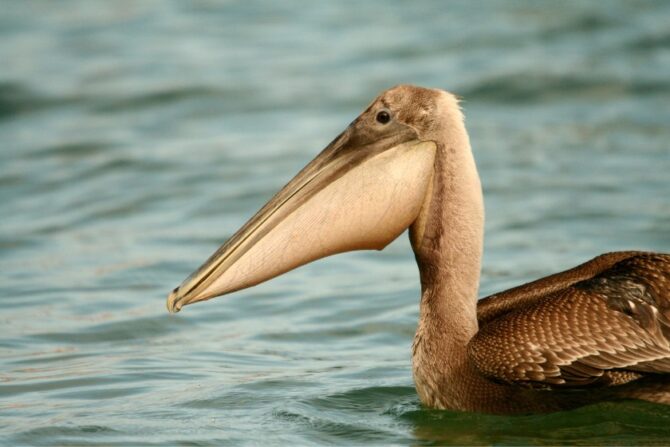
The pelican encompasses many large waterbirds that form the Pelecanidae family. While its ancestry isn’t explicitly stated, the fossil record has shown a prehistoric species similar to the pelican.
The biggest identifying feature of the pelican is the throat pouch which serves as a useful feeding tool. There’s also the long beak.
There are eight living pelican species, all of which can be found worldwide except Antarctica because they do better in warmer temperatures.
You’d find them close to waters where they feed on fish. They are good swimmers and have webbed feet that give them an advantage on the water.
6. Sandhill Crane
(Antigone Canadensis)

The sandhill crane is similar to the velociraptors of old, taking its wingspan and long feathers from its ancestor.
The velociraptor is also the ancestor of the great blue heron. Sandhill cranes are found in North America and Siberia, where it stays close to rivers.
These birds are recognized by their long legs and an equally long beak, a defining characteristic of some dinosaurs of old.
They are mainly herbivorous, feeding on corn, wheat, and sorghum. However, some can be omnivores.
7. Kiwi
(Apteryx)
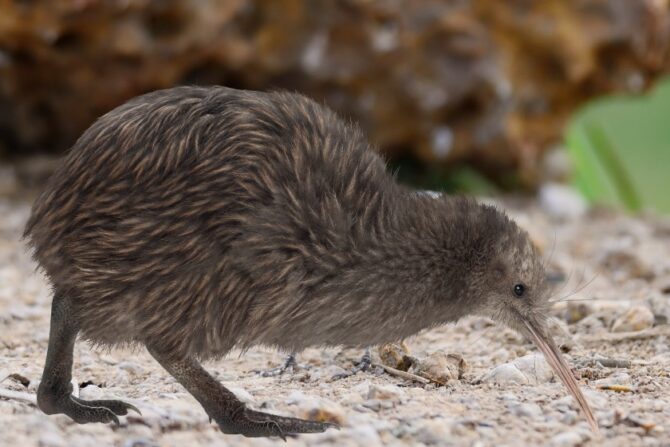
Kiwi is a descendant of the notorious Tyrannosaurus Rex, but fortunately, it displays neither the ferocity nor the aggressiveness of its ancestor.
The kiwi is a ratite, a group of flightless birds that includes the ostrich and emus. It is the smallest ratite, measuring around the size of a domestic chicken.
There are five kiwi species, some of which are the North Island brown kiwi and the southern brown kiwi.
The population of each species has been affected, leading to their classification as either vulnerable or near threatened. As such, they can all be found in New Zealand.
Kiwis are mainly nocturnal, and this might be to avoid humans alongside other predators. They feed on fruits, eels, and amphibians.
8. Ostrich
(Struthio)

The ostrich is a ratite bird like the kiwi, but it is bigger than its flightless companion. It is related to the ornithomimosaurs, a species that was also characterized by a long neck.
There are two ostrich species in existence today, the Somali ostrich and the common ostrich. Both occur in Africa, specifically in the Sub-saharan and the horn.
Ostriches have a lot of records. They are the fastest birds with the biggest eggs and even the heaviest living bird. They are often found in arid habitats like the Sahel and savannas.
The common ostrich is classified as the least concern by the IUCN, but the Somali ostrich is classified as vulnerable due to factors like excessive hunting.
9. Toucan
(Ramphastidae)
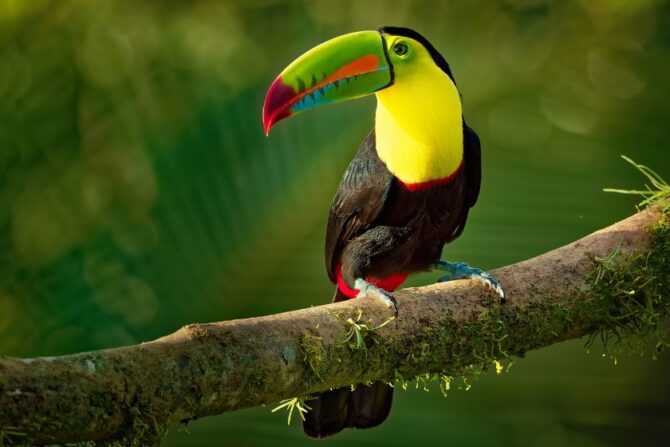
The Toucan is a member of the bird family Ramphastidae, closely related to the American barbet.
It is known for its large, colorful bill and might be a descendant of the Anichorinis, a small raptor that is similar to the toucan.
There are over 40 different toucan species, the most popular being the toco toucan.
The toucan can be found in the Americas, living in countries like Mexico and Argentina. Habitat depends on the species in question.
The toco toucan lives in open woodlands, different from most other species that stay in forests.
Toucan’s main diet consists of fruits, but when it gets the opportunity, it can feed on small animals like insects, lizards, and birds. This bird is also very social, occurring in groups of 20 or more birds.
10. Helmeted Hornbill
(Rhinoplax vigil)

The helmeted hornbill is known for its unique appearance and features of a rooster mixed with a toucan. It has a long, yellow beak and a large, distinctive growth on its head called a casque.
The casque is so large that it can make up 10% of the bird’s weight.
This species is only found in specific regions such as the Malay Peninsula, Sumatra, Borneo, Thailand, and Myanmar.
Unfortunately, it is facing the threat of extinction due to extensive poaching for its casque, which is used to make jewelry and ornaments.
11. American Bald Eagle
(Haliaeetus leucocephalus)
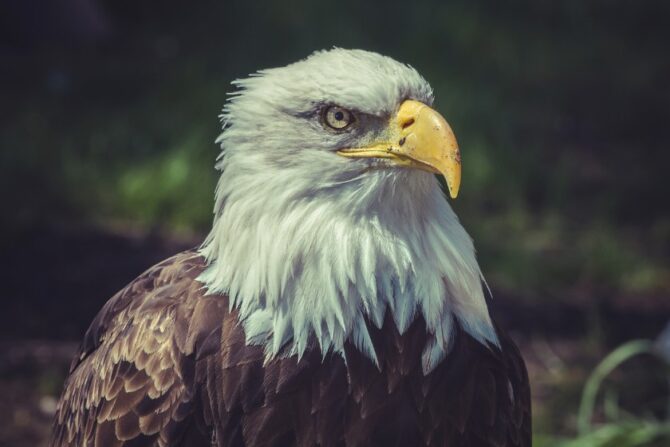
The American bald eagle—simply called the bald eagle—is a bird of prey that lives in North America.
It is very similar to the white-tailed eagle and has all the features you’d expect from a raptor.
This includes the hooked beak, feathers, and talons. Bald eagles also look ferocious, especially to their prey.
Countries the bald eagle lives in include Canada, Mexico, and the United States. It stays close to open water because of its affinity for fish.
Despite the name, the bald eagle is not bald. It instead has a white head.
Wrap Up
The link between birds and dinosaurs sounds unlikely to someone who has never come across this before, but it has been established as a fact.
Thus, it isn’t surprising that the birds that look like dinosaurs on our list and more can be traced back to the extinct animals many people love.
Next up…
References & Notes
- Glee H. 1998. Birds and dinosaurs – the debate is over. Nature.
- Turtles, snakes, lizards, and relatives. BioKIDS, University of Michigan.
- Nikolas. If birds evolved from dinosaurs, would that make them reptiles too? Ask a Biologist, Arizona State University.

